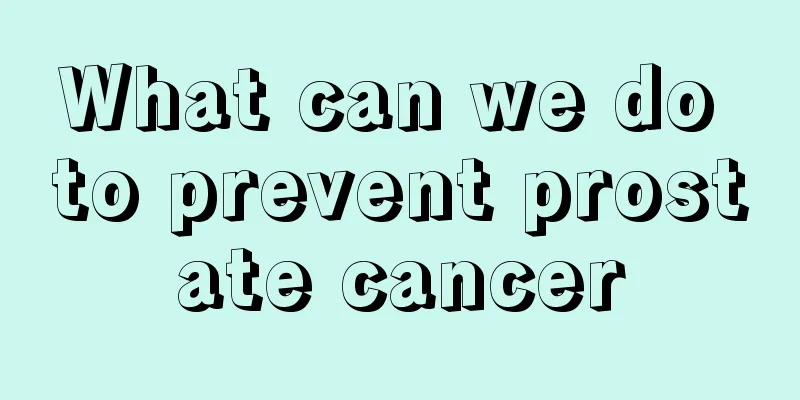Prevention of complications from radiotherapy for esophageal cancer

|
There are many types of oncology diseases, which sound scary. Esophageal cancer is a typical one. Imagine if our diet is affected, how can we be in a good mood? When we see delicious food, we lose our appetite when we think about the difficulty of swallowing. In fact, there is no need to worry too much about esophageal cancer. Esophageal cancer is just difficult to treat, but it is not incurable. Esophageal cancer, also known as esophageal cancer, is a malignant tumor that occurs in the esophageal epithelial tissue. It is a high-incidence type in my country. The age of onset is mostly over 40 years old, and there are more males than females. However, in recent years, there has been an increasing trend in the number of patients under 40 years old. The occurrence of esophageal cancer is related to many factors, such as chronic stimulation by nitrosamines, inflammation and trauma, genetic factors and dietary habits. Do not make blind choices about the treatment of esophageal cancer. In principle, patients with esophageal cancer that can be surgically removed have two treatment options: esophagectomy or synchronous radiotherapy + chemotherapy; however, for tumors in the middle and lower segments or involving the gastroesophageal junction, surgical treatment is recommended; for cervical esophageal cancer, locally advanced unresectable tumors, and patients who choose non-surgical treatment, the preferred treatment is synchronous radiotherapy + chemotherapy. Radiotherapy-led comprehensive treatment of esophageal cancer If the patient chooses surgical treatment, two aspects must be evaluated: one is whether the patient can tolerate anesthesia, thoracotomy and other surgical shocks, and the other is whether the patient's tumor condition is within the range of surgical resection. Otherwise, the surgical treatment effect will not be ideal. Compared with the high threshold of surgical treatment, radiotherapy is more approachable. The radiotherapy methods for esophageal cancer are divided into simple radiotherapy and comprehensive treatment of radiotherapy plus other treatments (including preoperative radiotherapy, postoperative radiotherapy and radiotherapy + chemotherapy). Simple radiotherapy is divided into radical radiotherapy and palliative radiotherapy according to the purpose of radiotherapy. Radical radiotherapy can achieve better results for patients with early stage or lesions that can be surgically removed but cannot tolerate surgery or are unwilling to undergo surgery due to medical diseases such as cardiopulmonary disease and hypertension. In addition, for those who have lost the opportunity for surgery, as long as the general condition is good, the lesion is relatively short, they can eat semi-liquid food, and there is no obvious chest and back pain, they are all indications for radical radiotherapy. The purpose of palliative radiotherapy is to relieve pain (such as analgesic radiotherapy for bone metastasis) and relieve eating difficulties to prolong life. Existing esophageal perforation and cachexia are contraindications to radiotherapy. Radical radiotherapy for esophageal cancer can prolong survival for patients with local recurrence after radiotherapy and then surgical resection. Regarding the diet of esophageal cancer patients, hospital experts recommend that they should try to eat more food that can enter the esophagus, such as semi-liquid food and full-liquid food. Pay attention to the quality of semi-liquid food and full-liquid food, do not limit calories, and make sure that the food is nutritious, soft, easy to digest and absorb. If necessary, you can make a homogenized diet, elemental diet and mixed milk. A homogenized diet is a normal diet that is made by removing the thorns and bones and blending it into a paste with a high-speed tissue pounder. The nutrients it contains are similar to normal diets, but it has been crushed in vitro and is very easy to digest and absorb. It can avoid long-term single diets and prevent constipation. The heat energy and nutritional requirements of homogenized diets can be prepared in a variety of recipes according to the condition and personal eating habits. You can choose rice, porridge, noodles, steamed bread, eggs, fish, shrimp, chicken, lean meat, pork liver, cabbage, carrots, rapeseed, white radish, winter melon, potatoes, and appropriate amounts of milk, soy milk, tofu, dried tofu and other foods. |
<<: What are the dangers of vomiting mucus due to esophageal cancer
>>: Complications after esophageal cancer surgery
Recommend
What causes the gap between teeth to widen
The widening of the gaps between teeth is definit...
What measures can help the health care of brain cancer
Brain cancer is becoming more and more common in ...
Common bile duct stone surgical drainage tube
The gallbladder is also an important digestive or...
Is disinfectant powder harmful to the body?
Whether in big cities or small towns, tidiness an...
Do you know the common knowledge about testicular cancer?
Do you know the common knowledge about testicular...
Can applying Evodia rutaecarpa to the feet cure insomnia?
Evodia rutaecarpa is also a Chinese medicinal mat...
Three Chinese medicine prescriptions for increasing white blood cell count in lung cancer patients after chemotherapy
Lung cancer is a common tumor of the respiratory ...
How long after exercise can you take a shower?
Some people take a shower immediately after exerc...
What is the difference between white vinegar and vinegar essence
Vinegar essence and white vinegar are both common...
What can a chest x-ray show?
Chest X-ray is a type of X-ray examination, and c...
Several major hazards of excessive drinking
We know that drinking in moderation can have cert...
What causes occupational bladder cancer? The best way to stay away from bladder cancer is to quit smoking and drinking
Bladder cancer is a very common urinary system di...
What should pregnant women pay attention to when caring for colorectal cancer
Colorectal cancer is one of the more common malig...
What are the effects of Rupi Sanjie Capsule
Rupi Sanjie Capsule is a commonly used drug in cl...
What's wrong with the excessive earwax in my right ear
The human ear is very important to us. Abnormal e...









